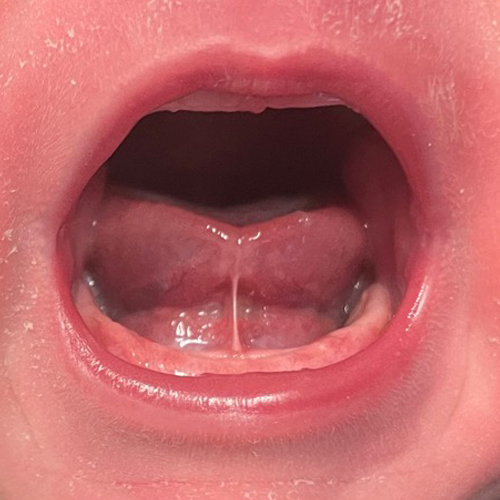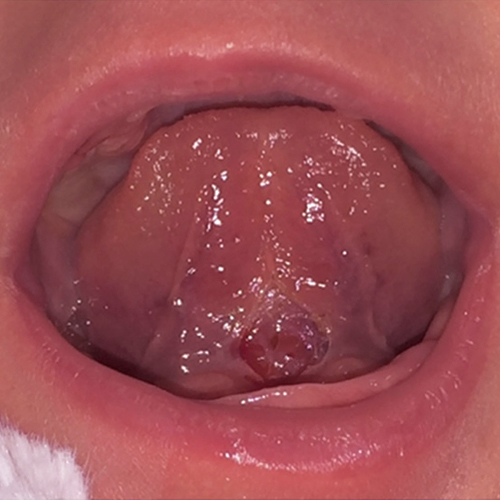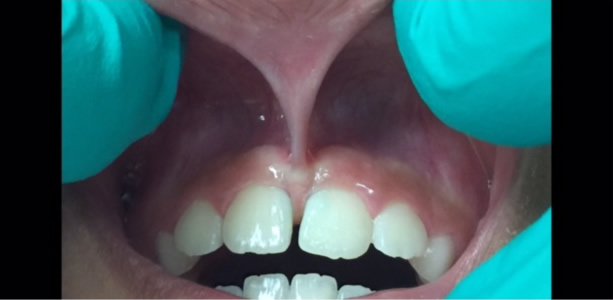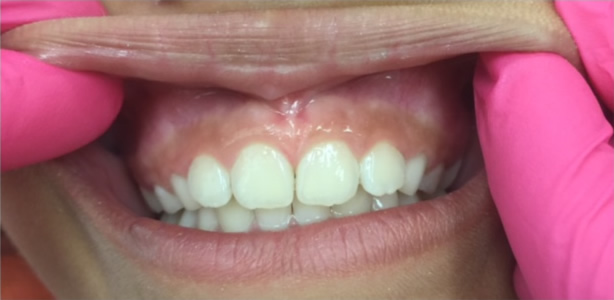What Is A Frenectomy?
A frenotomy or frenectomy is a procedure that consists of releasing the frenum under the tongue or upper lip to allow for better range of motion. Children may be born with a combination of conditions called a tongue-tie (ankyloglossia) and/or a lip-tie, causing restrictions in movement of the tongue or lip. These restrictions can cause difficulty with breastfeeding or other health problems such as dental decay, misaligned spacing, speech and airway difficulties, and digestive issues. These issues can generally be corrected by a simple procedure done with our soft tissue laser.
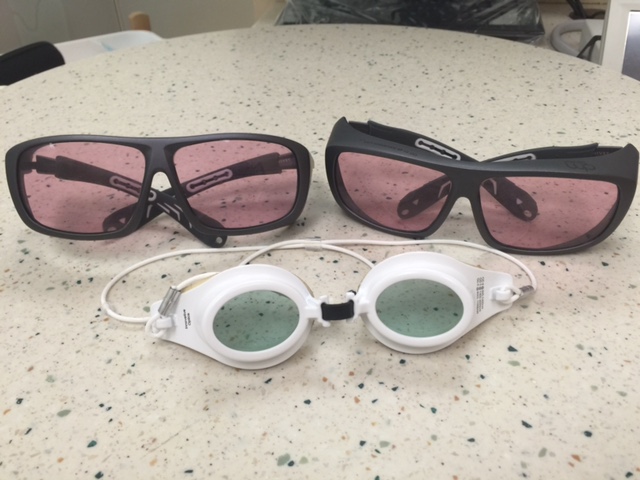
Laser Frenectomy – How Does It Work?
A soft tissue laser does not cut. Instead, it vaporizes tissue with light energy almost painlessly. In addition, the laser procedure causes almost no bleeding. Lasers sterilize at the touch and therefore cause less risk of infection. Healing is very quick—a laser stimulates bio-regeneration. The result is beautiful tissue and less chance of relapse.
Tongue Tie
What Does It Really Mean?
Ankyloglossia, or tongue-tie, is the restriction of tongue movement as a result of fusion or adherence of the tongue to the floor of the mouth. A tongue-tie is caused by a frenum that is abnormally short or attached too close to the tip of the tongue.
Normal tongue function is important for multiple reasons. Among the many benefits, normal tongue function allows a baby to latch adequately and breastfeed efficiently, promotes normal speech development, makes it possible for a child to self-cleanse the mouth during eating, supports adequate swallowing patterns, allows for proper growth and development, and makes fun little things like eating ice cream, kissing, or sticking your tongue out to catch snowflakes possible.
Challenges That Can Occur With A Tongue-tie
- Inability to open mouth widely, affecting speech and eating habits
- Inability to speak clearly when talking fast/loud/soft
- Clicking jaws
- Pain in jaws
- Protrusion of the lower jaw (inferior prognathism)
- Effects on social situations such as kissing, licking ice cream
- Dental health complications such as a tendency toward inflamed gums and increased need for periodontal surgery
- In the elderly, difficulty in keeping a denture in place
Lip Tie
How Can A Lip-tie Affect My Child?
A lip-tie occurs when the upper lip remains attached to the upper gum. Challenges that can occur in children and infants with moderate to severe lip-ties include:
- Pain with breastfeeding
- Inability to adequately flange the maxillary lip upward during breastfeeding, affecting an infant’s latch and ability to create a good seal
- Formation of a large gap between the maxillary central incisors, called a diastema
- Difficulties with brushing and flossing
- Increased risk of dental decay
- Repeated trauma to the maxillary frenum because it is so low and prominent
Why Does It Hurt When I Breastfeed My Baby?
Many mothers are told, or mistakenly assume, that there is something wrong with them if they cannot successfully breastfeed. In fact, this is often not true. Infants may be born with a combination of limiting conditions called a tongue-tie (ankyloglossia) and/or a lip-tie that can complicate efforts to breastfeed.
Tongue-ties are normally straightforward to diagnose and fairly easy to treat: the tongue is heart-shaped when the baby cries, and there is an obviously tight frenulum underneath that runs from the floor of the mouth to an area close to the tip of the tongue. Tongue-ties can vary in severity and can include what we call “posterior tongue-tie,” which is much more difficult to diagnose and recognize. In such a case, the frenulum looks nonexistent, making it appear tongue-tie cannot be the issue. Instead, the tongue looks squared off, with the floor of the mouth webbing/tenting the tongue. The edges of the tongue form a cup when the infant cries, as it is unable to elevate, and the tongue will twist rather than move side to side. Most notably, the tongue absolutely cannot stick out when the mouth is wide open (even if it can stick out somewhat when the mouth is partially open), which is the ideal position for breastfeeding.
A mother who tries to breastfeed a tongue-tied baby suffers tremendously, both mentally and physically. Not only may she have to relatch the baby multiple times during a feed and deal with extended feedings, she also experiences damaged nipples, cracks, bruises, and pain during feeds. Her risk of breast infection increases and her milk supply can be greatly reduced due to the lack of stimulation from an inefficient latch.
Tongue-tied babies may lose weight, get sleepy during feeds (as they work much harder than other babies to stay latched), and become extremely gassy and irritable, making the parents’ experience even more frustrating. Lip-tied babies end up with blisters on their lips from trying so hard to stay latched. Affected babies tend to feed much more often because their inefficiency results in lower milk intake, making hunger kick in faster.
WHY SHOULD I HAVE MY BABY’S TONGUE-TIE AND/OR LIP-TIE RELEASED?
- To help make breastfeeding more successful
- To help relieve painful breastfeeding and regain healthy nipples and breasts
- To improve milk production by adequate stimulation
- To help promote bonding between a mother and her baby
- To ensure adequate infant feeding and growth
- To avoid potentially serious long-term issues with palatal development, tooth spacing, dental caries, speech impairments, and social stigma
What Can I Expect After The Laser Frenectomy Is Done?
Breastfeeding immediately after the procedure is fine, as breast milk contains antibodies and anti-inflammatory compounds that aid healing. In addition, the simple act of breastfeeding will reassure and soothe your baby.
It is possible that latching may be difficult at first, as a small amount of anesthetic is used to complete the procedure; do not be alarmed. The numbness will wear off about 30-45 minutes after the procedure.
Posterior tongue-ties may require a few weeks of practice before the benefits of the frenectomy become fully apparent. We recommend following the prescribed post-treatment exercise plan thoroughly and working with a lactation consultant and possibly a bodyworker (craniosacral therapist, pediatric chiropractor, etc.) to increase the chances of success.

Frenectomy/frenotomy Post Operative Care
PRINCIPLES OF ORAL WOUND HEALING
Post-procedure stretches are key to getting an optimum result. The mouth tends to heal so quickly that the frenum may prematurely reattach, causing a new limitation and/or the persistence or return of symptoms. Because wounds tend to contract towards their center as healing occurs and raw wound surfaces in the mouth in close proximity will tend to reattach, it is important to keep them stretched open.
ACTIVE WOUND MANAGEMENT – STRETCHING EXERCISES
As you undertake these exercises, it is important to remember to stay relaxed, smiling, and positive. You should show your baby or child that the activity is nothing to be fearful about. The exercises are not meant to be forceful or prolonged. Stretching exercises with quick and precise movements are best. A small amount of spotting or bleeding is common while doing the exercises, especially in the first few days.
Please view the following videos for examples of how to do them properly.
To help with discomfort, you may use organic clove oil, acetaminophen, ibruprofen (if 6 months of age or older), coconut oil, or other homeopathic measures. Starting a few days after the procedure, the wound(s) will look white and/or yellow in appearance.Don’t be alarmed: this completely normal inflammatory response is the body’s natural way to make a Band-Aid, and is a sign that healing is progressing well.
UPPER LIP STRETCHES
The upper lip is the easier of the 2 possible frenectomy sites to stretch. If you are doing both lip and tongue, start with the lip. Place your clean finger under the lip and move it up as high as it will go, until you feel resistance. Then gently sweep from side to side for several seconds. Remember, the goal is to open the opposing surfaces of the lip and gum so they cannot stick together.


UNDER THE TONGUE STRETCHES
Insert index finger under the tongue and lift it towards the roof of the baby’s mouth. The tongue needs three separate stretching motions to keep the diamond-shaped wound from reattaching before it heals:
-
1
Once you are under the tongue, pick up the posterior part of the tongue as high as it will go towards the palate. Hold it there for 3 seconds, relax, and do it again. The goal is to completely unfold the diamond so that you can see it all completely. The fold of the diamond across the middle is the first place it will reattach.
-
2
Place your finger in the middle of the diamond and do a gentle circular stretch for several seconds to dilate or open up the diamond.
-
3
Turn your finger sideways and do a rolling pin motion to try and keep the diamond as deep as possible. Start at the fold “center” of the diamond and move to either side of the diamond top and bottom to loosen up the muscles of the tongue and floor of the mouth.
-
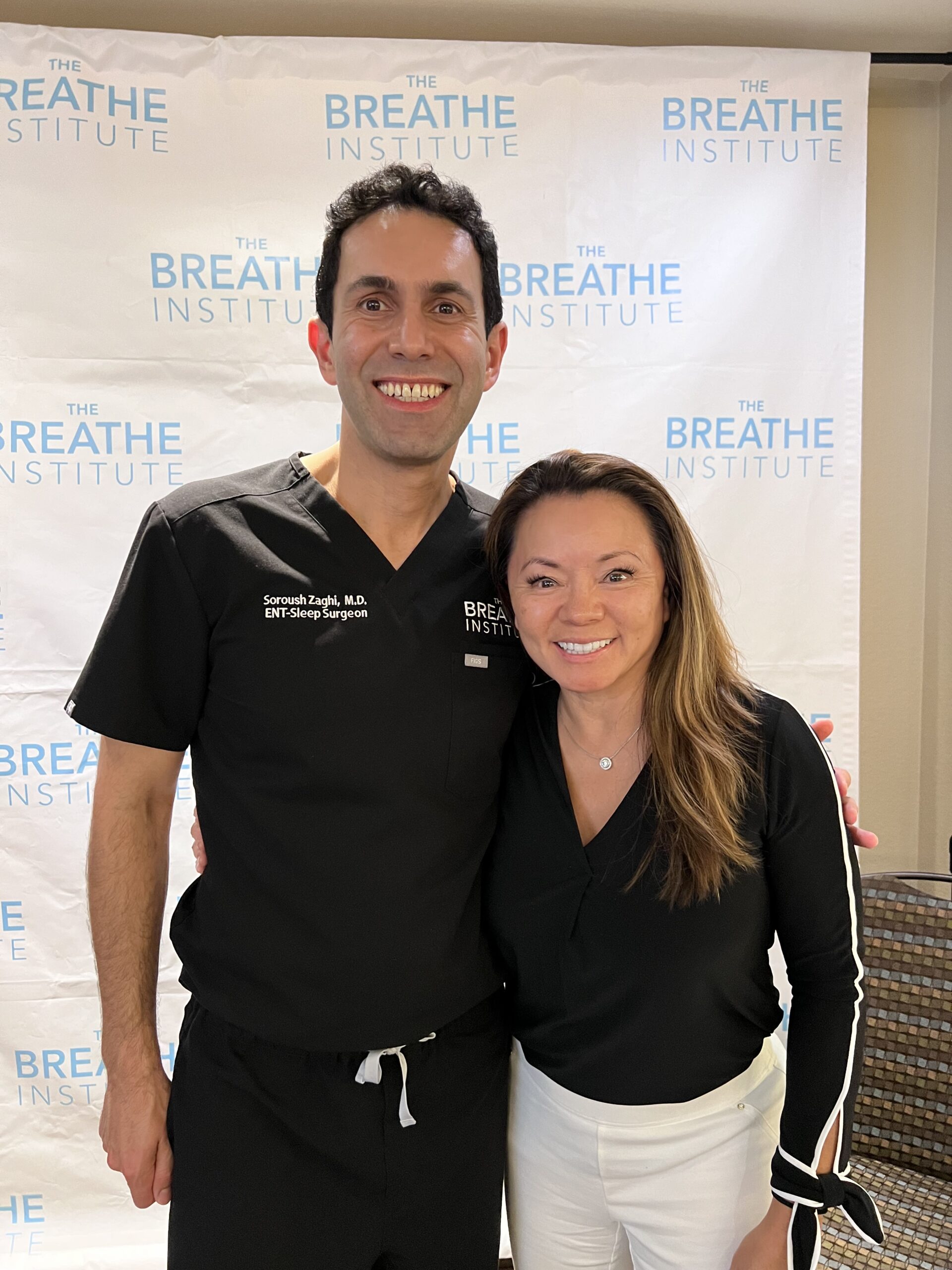
Dr. Soroush Zaghi, renowned ENT& Sleep surgeon, Founder of The Breathe Institute
-
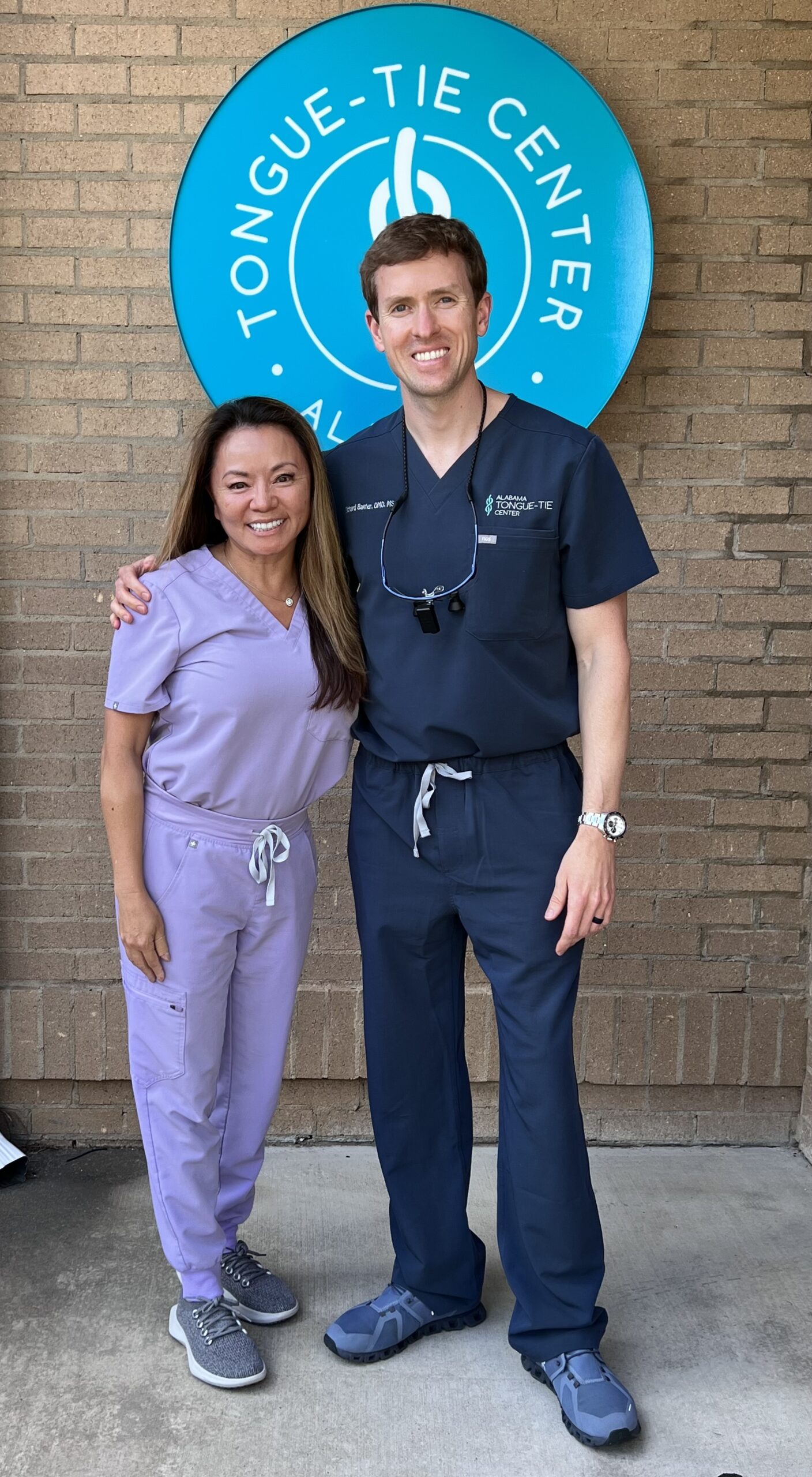
Dr. Richard Baxter, author of The Tongue Tied book
-
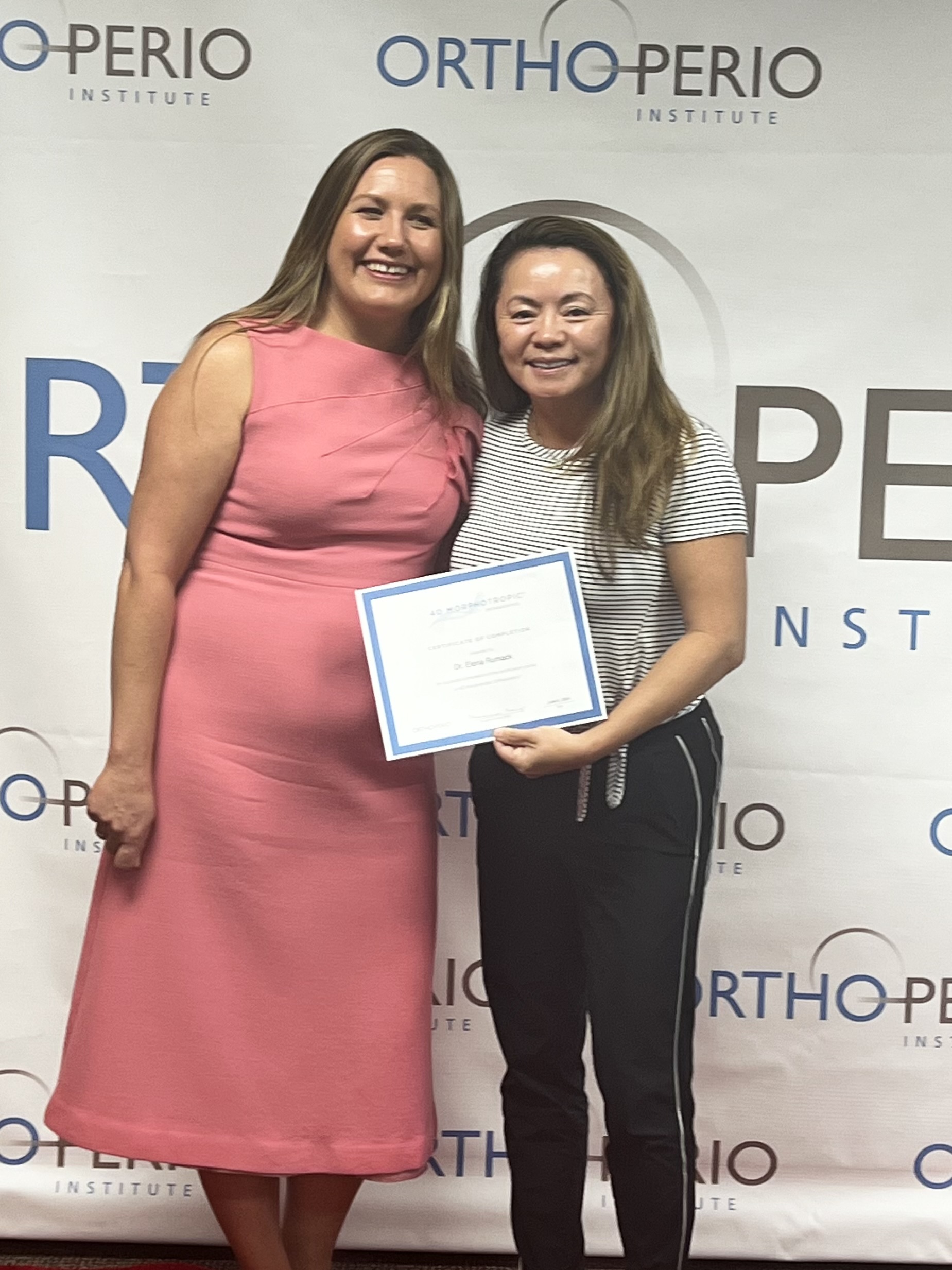
Dr. Marianna Evans, renowned Airway Orthodontist and Periodontist
-

Dr. Rumack and Dr. Larry Kotlow, world- renowned specialist in laser frenectomies, at the International Affiliation of Tongue-tie Professionals meeting
-

Dr. Rumack and Dr. Bobby Ghaheri, an ENT physician and breastfeeding medicine specialist
-

Dr. James Murphy, Pediatrician and Breastfeeding Medicine Specialist
-

Dr. Rumack and Dr. James Jesse, a well-known specialist in the field of laser frenectomies

